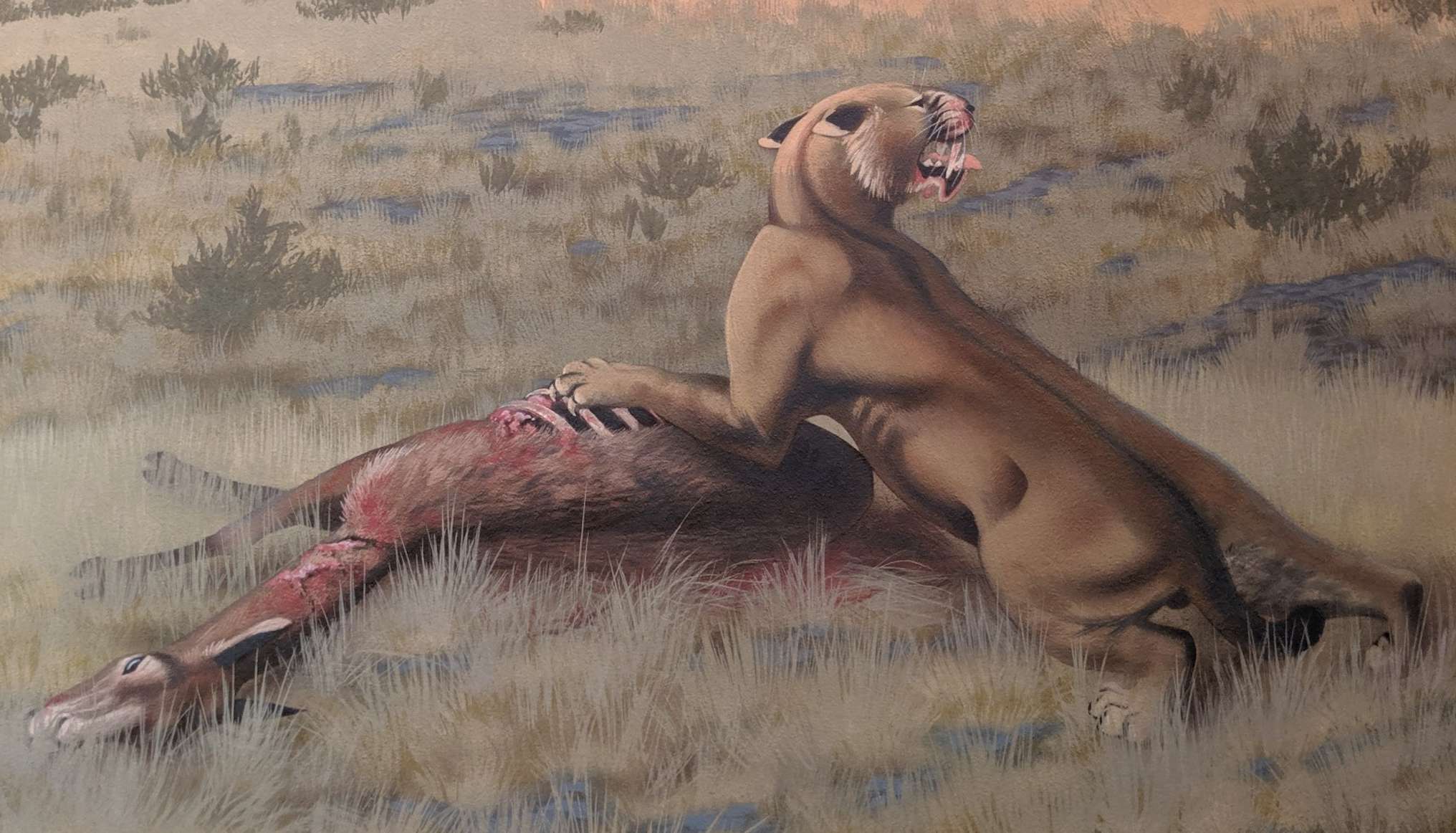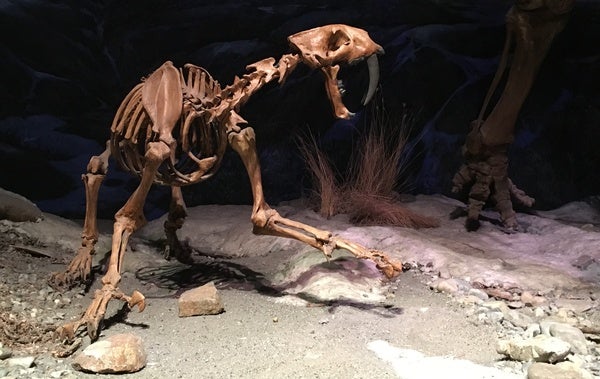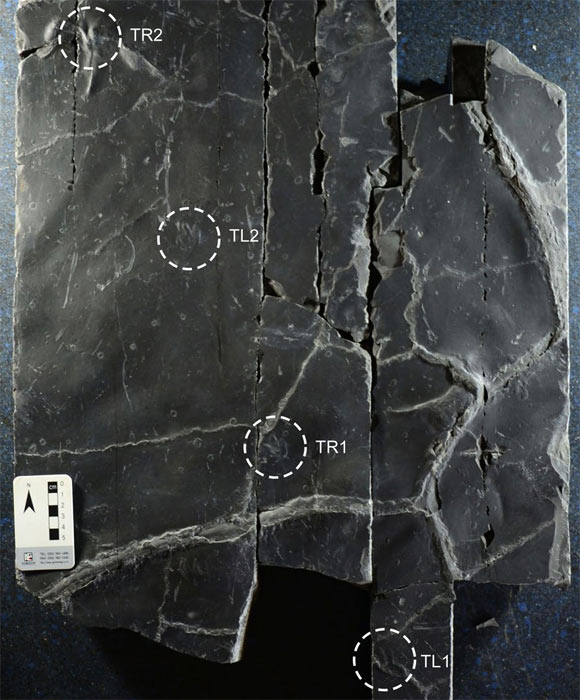The newly-identified species — the earliest and most primitive member of the saber-toothed cat genus Amphimachairodus — had craniodental adaptations to social behavior and open environment.
An artist’s reconstruction of two Amphimachairodus hezhengensis defending their prey (Hezhengia bohlini) from two Dinocrocuta gigantea. Image credit: Oscar Sanisidro.
Amphimachairodus hezhengensis lived in what is now northern China during the Turolian age of the Miocene epoch, between 10 and 9 million years ago.
The ancient predator is the earliest member of the genus Amphimachairodus.
“Amphimachairodus is the most widely distributed and successful genus among Late Miocene forms of saber-toothed cats,” said first author Dr. Qigao Jiangzuo, a researcher with the Institute of Vertebrate Paleontology and Paleoanthropology at the Chinese Academy of Sciences, Peking University and the American Museum of Natural History, and his colleagues.
“Members of this genus are known in Europe, Asia and North America.”
“Amphimachairodus is mainly documented in the Turolian or deposits of equivalent age, with very abundant remains from the Linxia Basin (Yangjiashan Fauna and Qinpushan Fauna; 8-6 million years ago) and Baode in China (7.25-5.3 million years ago), and in the Quiburis Formation and Coffee Ranch in southwestern North America.”
“Many cranial traits of Amphimachairodus (e.g. the long snout and enlarged mastoid) are already Homotherium-like, suggesting potentially similar adaptations.”
“However, where Amphimachairodus originated and the function of these traits are still unclear.”
Amphimachairodus hezhengensis: (a) skull of Amphimachairodus hezhengensis; (b) geography of fossil locality; (c) Amphimachairodus sp. forepaw; (d) large predators contemporary with Amphimachairodus hezhengensis in the Linxia Basin: (d1) Amphimachairodus hezhengensis; (d2) Dinocrocuta gigantea; (d3) Agriotheriini ursid. Image credit: Jiangzuo et al., doi: 10.1098/rspb.2023.0019.
The nearly complete skull of Amphimachairodus hezhengensis was found at the Houshan locality, belonging to the Dashngou Fauna of the Linxia Basin, located on the northeastern border of the Tibetan Plateau.
“The new skull shows typical Amphimachairodus traits, representing the earliest member of the genus and providing a basis for investigating its peculiar morphology and adaptions,” the paleontologists said.
Amphimachairodus hezhengensis was about 2 m (6.6 feet) long, and had a wide forehead, a long rostrum, and small incisors.
“The long snout, laterally oriented and posteriorly located orbit of Amphimachairodus suggest a better ability to observe the surrounding environment, rather than targeting single prey, pointing to an adaptation to the open environment or social behavior,” the researchers noted.
The team’s analyses support that traits correlated with killing behavior and open environment adaptation evolved prior to other traits, suggesting that changes in hunting behavior may be the major evolutionary driver in the early evolution of the lineage.
“Amphimachairodus hezhengensis represents one of the most important transitions in the evolution of Machairodontini, leading to adaptation in open environments and contributing to their further dispersal and radiation worldwide,” the authors concluded.
“This rapid morphological change is likely to be correlated with increasingly arid environments caused by the rise of the Tibetan Plateau, and competition from abundant large carnivores in this area.”
Source: sci.news












